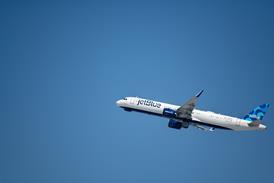The US National Transportation Safety Board has chided the US Federal Aviation Administration for the limited progress being made in getting its top safety recommendations codified into rules.
The observations were part of the board's annual review of its "Most Wanted" safety concerns for all transport modes. Of the 46 recommendations on its list, 19 are directed to the FAA and the most remain "open" with an "unacceptable" response in the NTSB's listing.
On the list this year, as last year, are calls to increase runway safety, prevent icing-related crashes, inerting fuel tanks, boosting the capabilities of voice and data recorders, introducing video recorders and eliminating working fatigue in pilots, mechanics and controllers.
Frustrations centred on FAA rule-makings that continue to be delayed, including a mandate, first proposed in 2004, to inert centre fuel tanks with nitrogen gas to prevent fuel tank explosions.
The final rule, which is set to be released on 8 February 2008, has been delayed numerous times, in part due to the cost-benefit analysis, says Tom Haueter, the NTSB's director of aviation safety. "Staff is concerned that costs are overstated and benefits are understated." Haueter says a new FAA rule to remove ignition sources inside fuel tanks may not be sufficient to prevent the explosions as new failure modes appear.
NTSB says there are four aircraft - two 737s and two 747s - with operating inerting systems in "daily airline service" as part of a two-year test of the reliability of the equipment, which costs between $150,000 and $250,000.
Other rulemakings delayed or not yet started include new rules to reduce fatigue, a requirement for on-demand Part 135 pilots to receive crew resource management training, and a rule to increase the duration from cockpit voice recorders from 30 minutes to 2h.
Source: Flight International























